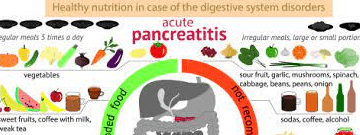Pancreatitis Diet: Foods to Eat and Avoid for Better Management
Discover the essential Pancreatitis Diet – learn which foods to eat and avoid to manage your condition effectively. Prioritize your health with a balanced diet.
Introduction
Pancreatitis Diet: The inflammation of the pancreas, known as pancreatitis, can result in symptoms such as abdominal pain, nausea, and vomiting. The pancreas produces enzymes crucial to the digestive process and required for digestion.
Inflammation of the pancreas can disrupt its functioning, making diet a crucial component of managing pancreatitis. This guide will cover the foods to eat and avoid when managing pancreatitis, offer meal planning tips, and provide a sample meal plan to help alleviate symptoms.
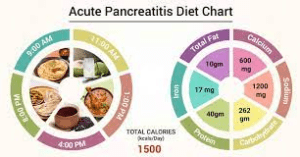
Pancreatitis Diet Foods to Eat When You Have Pancreatitis:
If you have pancreatitis, choosing foods that are gentle on your digestive system and won’t cause inflammation in the pancreas is essential.
Here are some foods that you can include in your diet:
1. High-Fiber Foods
Consuming foods rich in fiber can aid in controlling digestion and alleviating constipation, a prevalent issue among individuals with pancreatitis. Examples include whole grains, fruits, and vegetables.
Brown rice, quinoa, and whole wheat bread are fiber-rich and can be a healthy addition to your diet. Besides, fruits and vegetables like apples, bananas, berries, broccoli, and spinach contain essential vitamins and antioxidants.
2. Lean Protein
Choose lean protein sources, such as chicken, fish, and tofu, to reduce the strain on your pancreas.
Avoid fatty cuts of meat and processed meats.
Salmon, tuna, and trout contain significant omega-3 fatty acids, while those who opt for plant-based diets might choose tofu as it is low in fat and protein.
3. Low-Fat Dairy
You can limit excess fat intake by opting for low-fat dairy products like skim milk, low-fat yogurt, and cottage cheese, which can still provide calcium and protein.
These dairy products are also easy to digest and help you feel full while providing essential nutrients.
- Healthy Fats – While limiting your fat intake is essential, you can still include healthy fats, such as olive oil, avocado, and nuts.
These provide essential nutrients and can help keep you feeling full.
Olive oil can serve as a cooking ingredient and salad dressing, while avocado can be incorporated into sandwiches or transformed into guacamole.
Almonds, walnuts, and cashews can serve as a snack or be utilized in salads to add some crunch.
- Plenty of Water – Staying hydrated is essential for overall health and can help keep your digestive system gliding.
Aim for at least eight glasses of water per day.
You may consider hydrating alternatives like herbal tea or coconut water to maintain hydration.
Including these foods in your diet can help manage symptoms and alleviate inflammation in the pancreas.
The following section will discuss foods to avoid when you have pancreatitis.
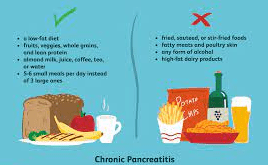
Foods to Avoid When You Have Pancreatitis (Pancreatitis Diet):
- Understanding which foods to avoid when dealing with pancreatitis is crucial, as they can worsen inflammation and lead to symptoms like pain and discomfort. Below are some foods that should be avoided if you have pancreatitis:
- Fatty and Fried Foods
Eating foods high in saturated and trans fats, like red meat, bacon, butter, and fried foods, can pose digestive challenges for the pancreas.
These foods can place unnecessary stress on the pancreas, leading to inflammation and discomfort.
Limiting your intake of these foods or avoiding them altogether is best.
1. Spicy Foods
Spicy foods can trigger inflammation in the digestive system, leading to discomfort and pain. This includes foods like hot sauce, curry, and chilli peppers.
If you have pancreatitis, avoiding or consuming these foods in moderation is best.
2. Alcohol
Alcohol is particularly harmful to those with pancreatitis.
Drinking alcohol can cause inflammation and harm the pancreas, worsening symptoms. It is essential to avoid any form of alcoholic beverage, including beer, wine, and spirits.
3. Sugary Foods
Consuming sugary foods like candy, soda, and baked goods can rapidly surge blood sugar levels, which could trigger inflammation in the pancreas.
Limiting your intake of these foods or avoiding them altogether is best.
4. Processed Foods
Inflammation and discomfort can be caused by processed foods, such as chips, cookies, and crackers, which are usually high in unhealthy fats and salt.
It’s best to choose whole, unprocessed foods.
- Dairy Products
Dairy products like cheese, milk, and butter can be difficult for the pancreas to digest, leading to discomfort and inflammation.
Limiting your dairy intake or choosing low-fat dairy products instead is best.
- Red Meat
Red meat is high in fat and can be difficult for the pancreas to digest.
It’s best to limit your intake of red meat or choose leaner cuts like chicken or fish.
- Raw Vegetables
Raw vegetables can be challenging to digest, particularly for those with pancreatitis.
It’s best to cook your vegetables to make them easier to digest.
Avoiding these foods can help reduce inflammation in the pancreas and improve your symptoms. However, speaking with a healthcare professional or registered dietitian is essential to creating
a personalized nutrition plan that meets your needs.
They can help you identify foods that may trigger your symptoms and provide alternative recommendations.
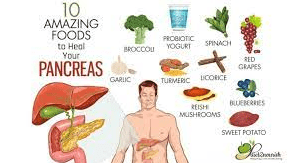
(Pancreatitis Diet) Meal Planning Tips for Pancreatitis:
Meal planning is essential to managing pancreatitis symptoms and promoting overall health. When you have pancreatitis, your body’s ability to digest food is compromised, and it’s gruelling to know what to eat to avoid triggering symptoms.
Still, with some simple mess planning tips, you can create a nutritional and succulent mess plan that supports your health and well-being.
Eat small, frequent meals: Eating smaller, more frequent meals throughout the day can help to reduce the workload on the pancreas and prevent overeating. Aim to eat six small meals per day instead of three large ones.
- Choose low-fat options: It is crucial to select low-fat options when managing pancreatitis, as high-fat foods can worsen symptoms. Choose lean protein sources such as chicken or fish and low-fat dairy products like skim milk or yogurt.
- Focus on whole foods: Processed foods and foods high in sugar or sodium can be problematic for people with pancreatitis. Instead, focus on whole foods like fruits, vegetables, whole grains, and lean proteins.
These foods are rich in essential nutrients and are less likely to trigger symptoms.
- Avoid trigger foods: Everyone’s triggers will differ, but some common culprits include spicy foods, fried foods, and alcohol.
Keep a food diary to help identify which foods may trigger your symptoms and avoid them as much as possible.
- Stay hydrated: Dehydration can worsen pancreatitis symptoms, so drinking plenty of water throughout the day is essential.
Aim for at least eight glasses of water daily and avoid sugary drinks and caffeine.
- Consider working with a registered dietitian: A registered dietitian can help you create a personalized meal plan that meets your specific nutritional needs and helps to manage your pancreatitis symptoms.
They can also guide you on incorporating nutrient-rich foods into your diet and managing mealtime symptoms.
Besides these meal-planning tips, you can make other lifestyle changes to support your health when you have pancreatitis.
These include quitting smoking, limiting alcohol consumption, exercising regularly,
and managing stress.
Taking a holistic approach to your health and wellness can reduce your symptoms,
improve your quality of life, and hone your feel overall.
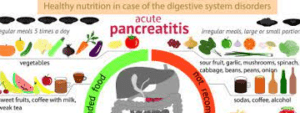
Sample Meal Plan for Pancreatitis Diet
Now that you know what foods to eat and avoid when you have pancreatitis, let’s combine it with a sample meal plan.
This meal plan is just a suggestion, and you should adjust it based on your personal preferences and any dietary restrictions you may have.
First day
- Breakfast: Scrambled eggs with spinach and a slice of whole-grain toast
- Snack: Sliced apples with almond butter
- Lunch: Grilled chicken breast with roasted sweet potatoes and steamed green beans
- Snack: Greek yogurt with mixed berries
- Dinner: baked salmon with quinoa and roasted asparagus
Second day
- Breakfast: Oatmeal with chopped walnuts and banana slices
- Snack: Carrot sticks with hummus
- Lunch: Turkey wrap with avocado, lettuce, and tomato in a whole wheat tortilla
- Snack: Cottage cheese with sliced peaches
- Dinner: beef stir-fry with brown rice and mixed vegetables
Third day
- Breakfast: Greek yogurt with granola and mixed berries
- Snack: Roasted almonds
- Lunch: tuna salad with mixed greens and cherry tomatoes
- Snack: Apple slices with cheddar cheese
- Dinner: Grilled chicken kabobs with quinoa and grilled vegetables
Fourth day
- Breakfast: Scrambled eggs with diced tomatoes and mushrooms and a slice of whole-grain toast
- Snack: Whole grain crackers with hummus
- Lunch: Black bean and vegetable soup with a side salad
- Snack: Baby carrots with ranch dip
- Dinner: roasted pork tenderloin with roasted sweet potatoes and steamed broccoli
Fives day
- Breakfast: Smoothie made with banana, mixed berries, almond milk, and spinach
- Snack: Hard-boiled egg
- Lunch: Turkey burger on a whole wheat bun with avocado and tomato slices
- Snack: Cottage cheese with pineapple chunks
- Dinner: Grilled shrimp skewers with brown rice and mixed vegetables
Drink water all day to stay hydrated. Your meal plan can include herbal teas or low-sugar liquids like coconut or sparkling water.
Pancreatitis management requires a healthy, balanced diet. Nutrient-dense diets and avoiding trigger foods miscalculate inflammation and promote recovery. Create a customized diet with your doctor or dietitian.
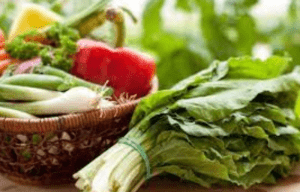
Conclusion
Those with pancreatitis should adhere to a healthy diet plan to manage their symptoms and stop further pancreatic damage.
Consuming low-fat and readily digestible foods, including lean meats, fruits, vegetables, and whole grains, is advised.
Avoiding high-fat, fried, and processed foods is also essential.
Meal planning and consulting with a healthcare professional or a registered dietitian can provide personalized guidance on dietary needs. Changing their diet can help manage symptoms and improve overall health and quality of life.
If you find a Meditation, Wellness Coach Then Visit this site:
Meditation Coach
I am Alicia Christine, A trauma-informed meditation coach, writer, and healing space facilitator from the USA. Who helps women overcome trauma and live happier, healthier lives?
I know that you’ve been through some stuff, and I have, too. I understand the courage it takes to acknowledge your adversity and traumatic experiences. When we allow the nervous system to finally rest through the BREATH, we can begin to identify and release pain, trapped emotions, and disease in our bodies. Inner work isn’t easy, but it’s worth it. I hope to be a guide that helps you along this path. Together, we’ll unlock healing.

